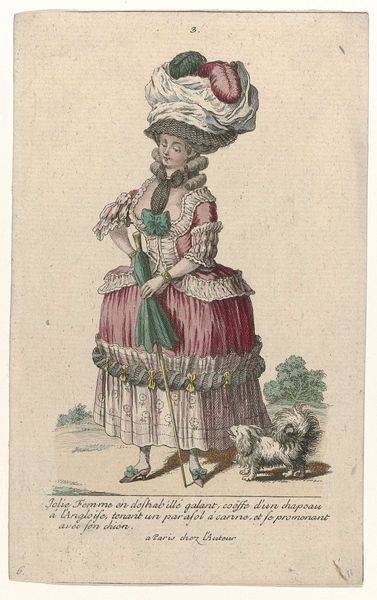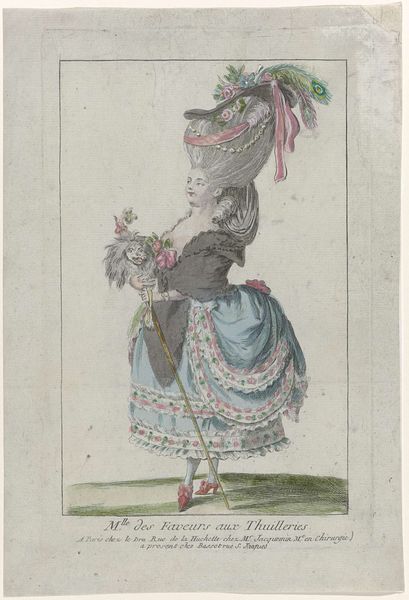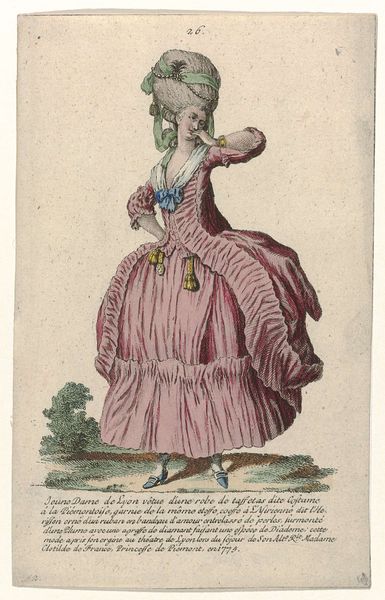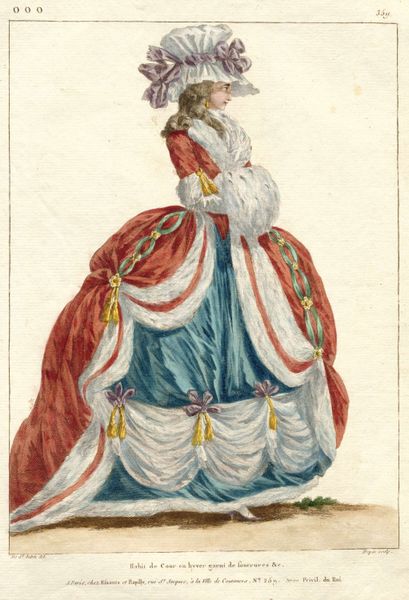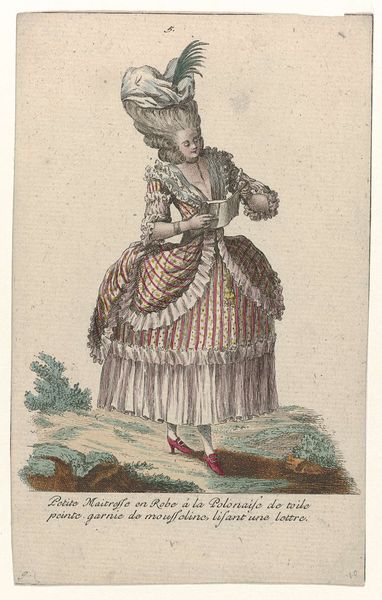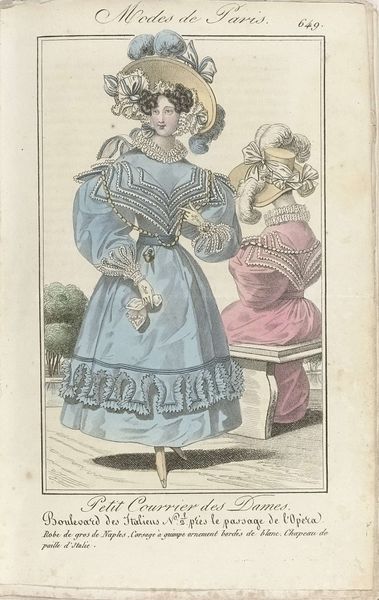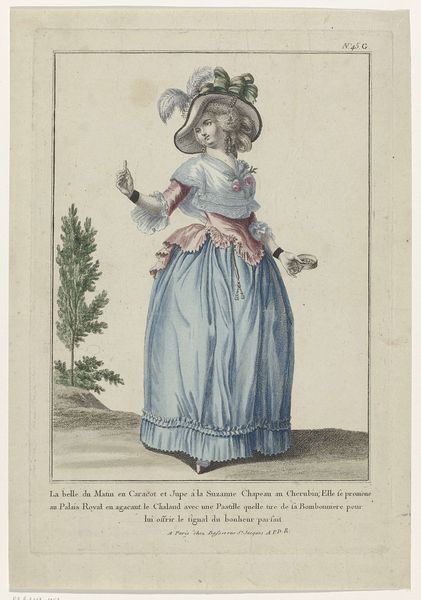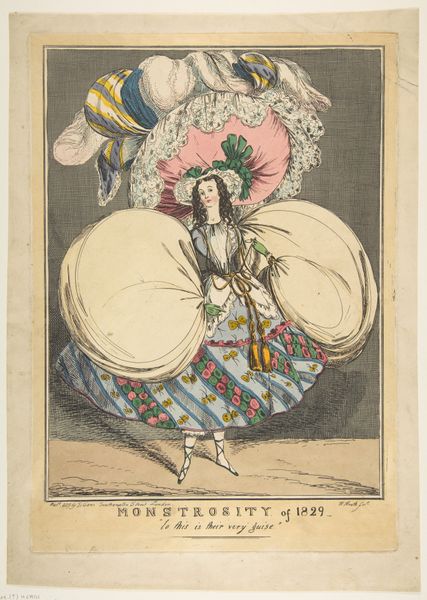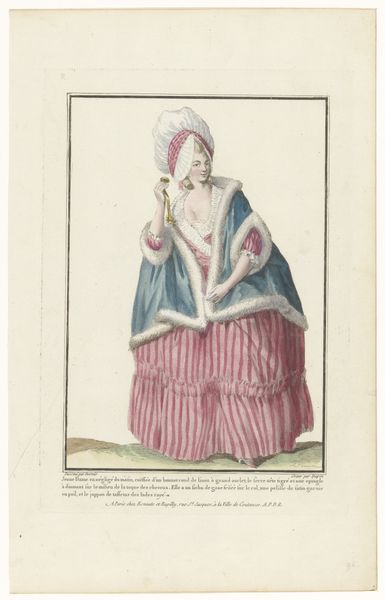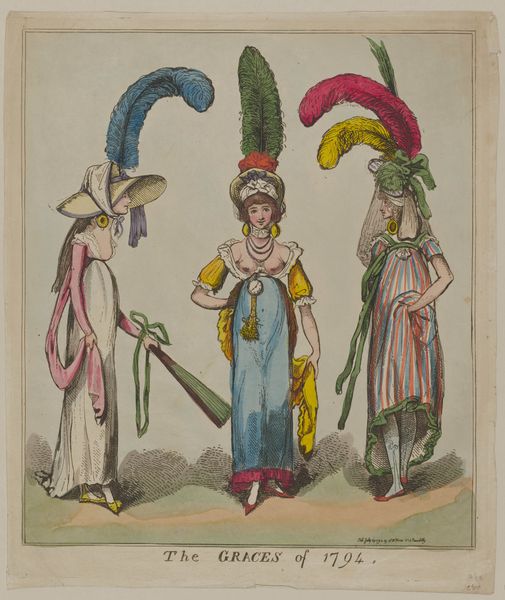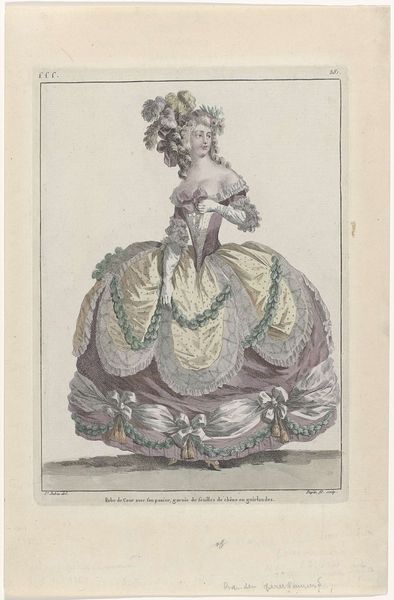
drawing, print, etching, paper
#
drawing
# print
#
etching
#
caricature
#
paper
#
england
#
romanticism
Dimensions: 320 × 225 mm (image); 338 × 230 mm (sheet cut within platemark)
Copyright: Public Domain
Curator: This is George Cruikshank's etching, "A Nice Lady or an Incomparable!!!!" from around 1818. The figure, loaded with absurd accessories and garish decorations, feels overwhelming. What strikes you most about it? Editor: I’m struck by how incredibly detailed the etching is. It looks like so much work to add all those layers. I’m wondering how this print functions as social commentary at the time, because obviously it does. What details stand out to you in terms of social commentary? Curator: Consider the means of production: etching allowed for mass distribution. These images became accessible to a wider public. The question isn't simply "what does it mean?" but also "how did it circulate, and to whom?". What can we learn from all of this about gender expectations and consumer culture? What about the cost of production versus the social cost, represented here? Editor: That’s interesting. It makes me wonder about the economic status of the people viewing this. Was it supposed to make poorer people laugh at the expense of the upper class, or was it made to criticize the habits of conspicuous consumption? The level of detail indicates careful planning, like each element carries meaning. I wonder if "Scallop Shell" meant something back then? Curator: Precisely! Those details—the scallop shell, the "fishing net" dress—hint at societal obsessions and perhaps anxieties around wealth and status. But also, consider the paper itself, the inks, the labour that went into its making and distribution. This wasn't high art displayed in a salon. Editor: So, thinking about the work that went into this really reframes it. It makes you wonder who the workers who actually etched it were, not just the artist himself. Curator: Indeed! Focusing on materiality reveals a different story, not just about what is represented, but how it was created and circulated within its particular moment. Editor: Thank you for sharing all of this! Now I can appreciate how much this simple print reflects a lot more beyond what's on the surface. Curator: Remember, examining art is always more fulfilling once you dig into who made the material.
Comments
No comments
Be the first to comment and join the conversation on the ultimate creative platform.
